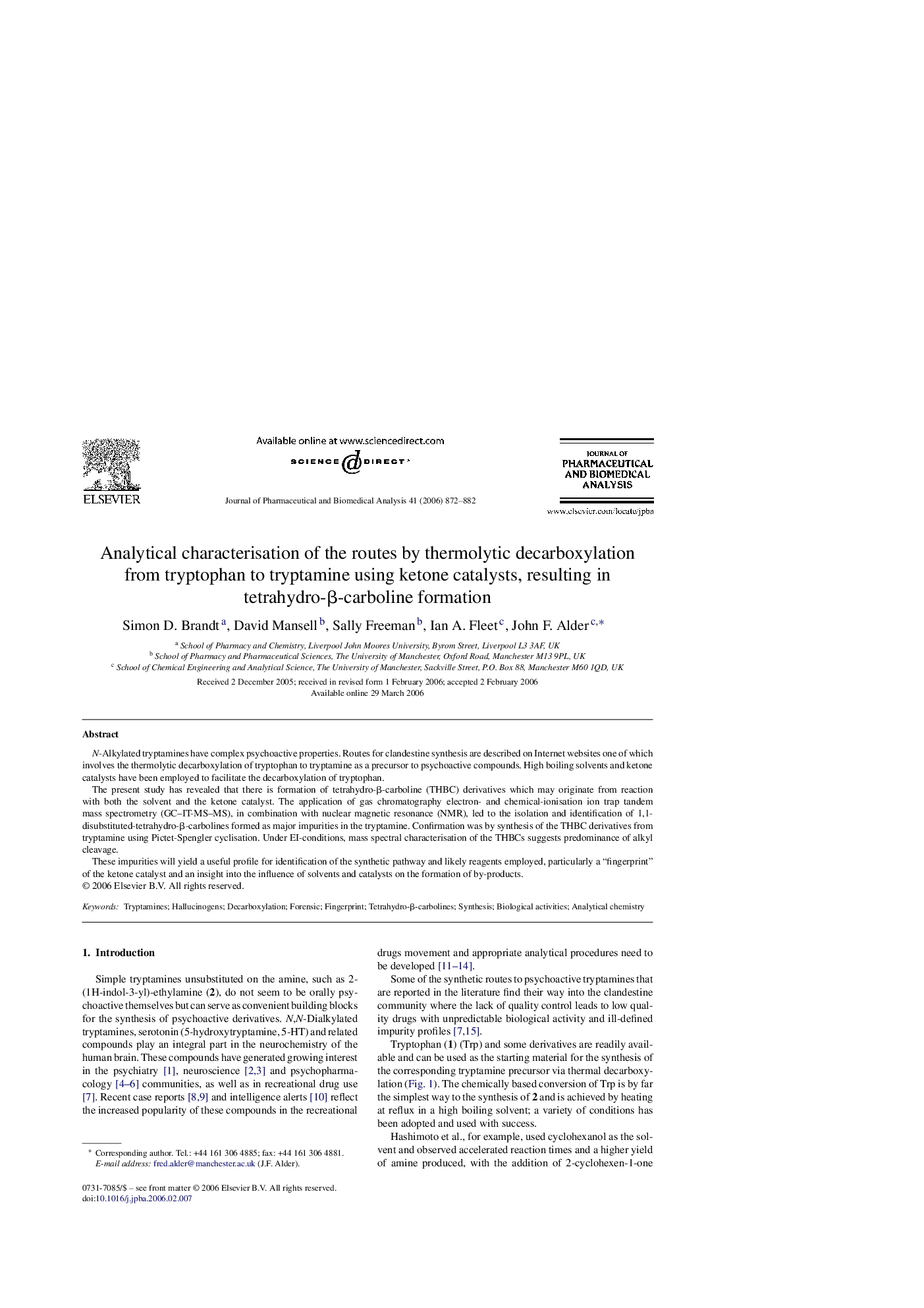| Article ID | Journal | Published Year | Pages | File Type |
|---|---|---|---|---|
| 1224568 | Journal of Pharmaceutical and Biomedical Analysis | 2006 | 11 Pages |
N-Alkylated tryptamines have complex psychoactive properties. Routes for clandestine synthesis are described on Internet websites one of which involves the thermolytic decarboxylation of tryptophan to tryptamine as a precursor to psychoactive compounds. High boiling solvents and ketone catalysts have been employed to facilitate the decarboxylation of tryptophan.The present study has revealed that there is formation of tetrahydro-β-carboline (THBC) derivatives which may originate from reaction with both the solvent and the ketone catalyst. The application of gas chromatography electron- and chemical-ionisation ion trap tandem mass spectrometry (GC–IT-MS–MS), in combination with nuclear magnetic resonance (NMR), led to the isolation and identification of 1,1-disubstituted-tetrahydro-β-carbolines formed as major impurities in the tryptamine. Confirmation was by synthesis of the THBC derivatives from tryptamine using Pictet-Spengler cyclisation. Under EI-conditions, mass spectral characterisation of the THBCs suggests predominance of alkyl cleavage.These impurities will yield a useful profile for identification of the synthetic pathway and likely reagents employed, particularly a “fingerprint” of the ketone catalyst and an insight into the influence of solvents and catalysts on the formation of by-products.
